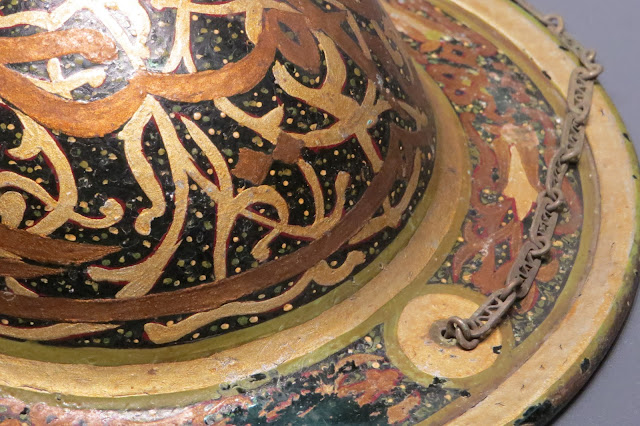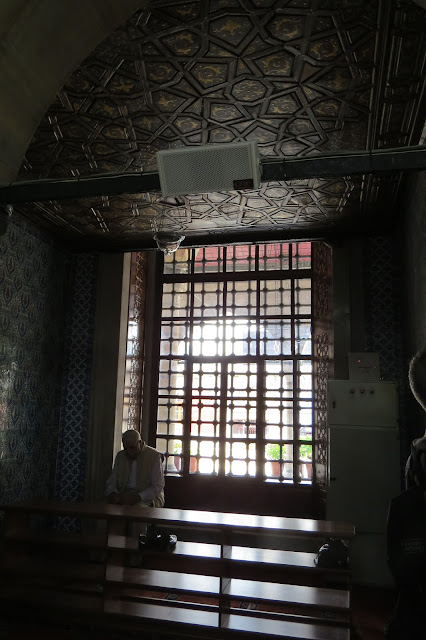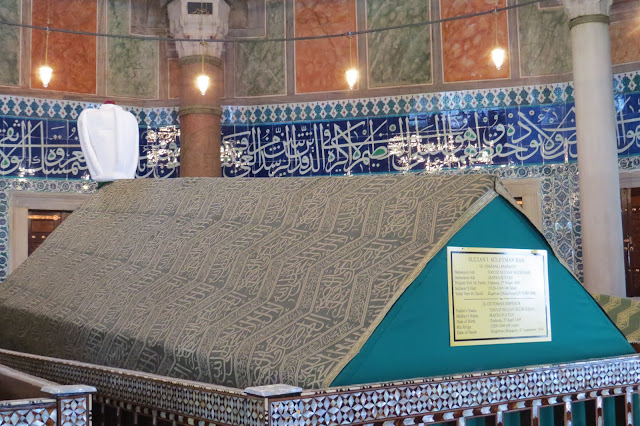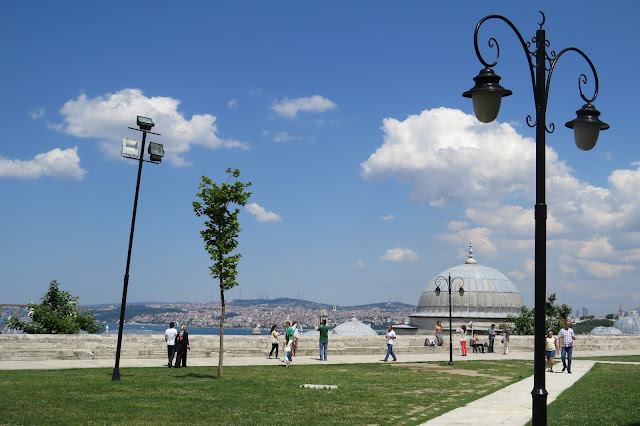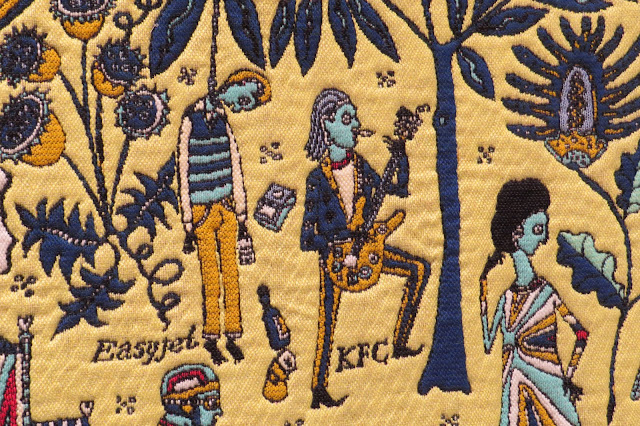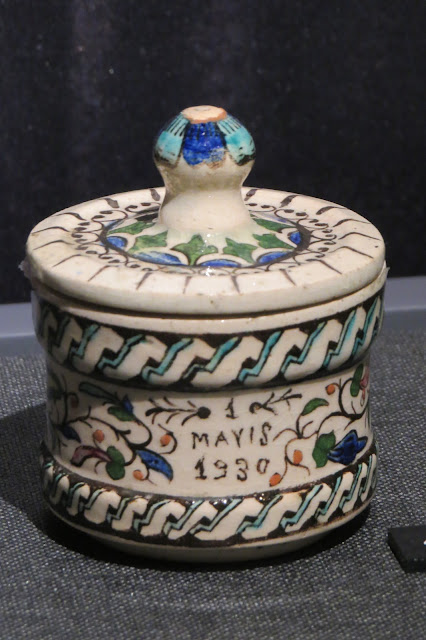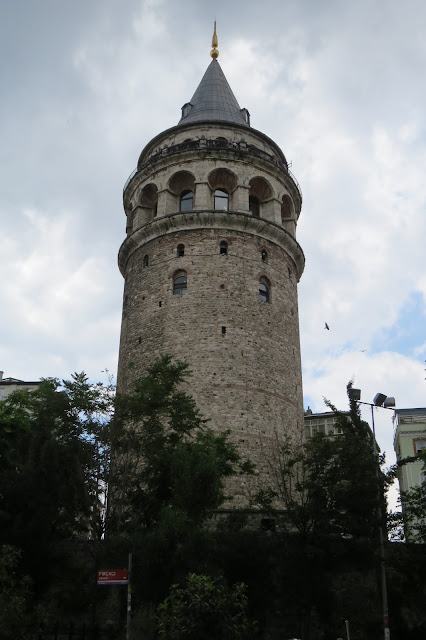But the renovated museum displayed plenty of art of historical as well as artistic significance.
There was a Ramadan market set up in the Hippodrome in front of the museum
We passed the Hagia Sofia and Blue Mosque every time we went to or from our hotel.
Yeni Cami seen from the Mamdi restaurant, showing the spice bazaar.
Tom refused to trade his hat for pistachios.
Rustem Pasa is known for its tiles. There must be several dozen designs included inside and out.
From Rustem Pasa it is an interesting walk uphill to the mosque of Suleiman the Magnificent.
The first time we visited the tomb was closed for renovations.
The second time we visited, ditto.
The third time the tomb renovations had been completed, but the cemetery gates were chained shut.
This time... the gates were open, and the tomb was open! The nearby tomb of Roxanna, his famous and controversial wife was closed, but we were delighted to finally visit his tomb. The small building was crammed with local people who regarded with a mixture of touristy interest and respectful, religious reverence.


The small building was decorated like a mosque, with a row of caskets of various sizes.
I'm always surprised to see stained glass in mosques.
A group of young people stood inside the bar between the visitors and the faithful. They spoke various languages and had reading materials and small korans , also in various languages. They were there to answer questions since this was Ramadan. My questions were fairly mundane -- such as why they suspended ostrich eggs throughout the mosque. (Answer: they repel spiders.) But we listened to questions from other visitors.
On the advice of our tour guide from our visit two years ago, we spent a day in the Beyoglu part of the city, starting with the Pera Museum.
The visiting exhibition was the work of Grayson Perry, a British artist, whose work was original and captivating. It included a documentary, which was at least as interesting as his work.
The rest of the museum was more traditional work by local artists.
Next up was Galata Tower, where we enjoyed lunch as well as the stunning views.
We could easily see Topkapi Palace and Hagia Sofia in the distance.
And by then it was time to leave Istanbul for Paris.


















